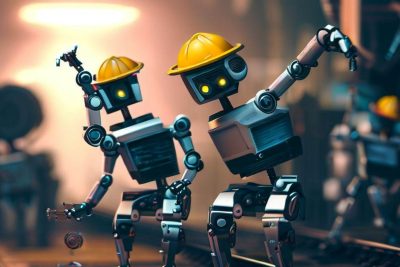AI to Force 12 Million American Workers to Look for Jobs

All Global Research articles can be read in 51 languages by activating the Translate Website button below the author’s name.
To receive Global Research’s Daily Newsletter (selected articles), click here.
Click the share button above to email/forward this article to your friends and colleagues. Follow us on Instagram and Twitter and subscribe to our Telegram Channel. Feel free to repost and share widely Global Research articles.
***
AI is about to revolutionize “US efficiency” with devastating social consequences. With AI (supported by other technologies), 30 % of hours currently worked across the US economy could be automated. See the McKinsey Study
- By 2030, activities that account for up to 30 percent of hours currently worked across the US economy could be automated—a trend accelerated by generative AI. However, we see generative AI enhancing the way STEM, creative, and business and legal professionals work rather than eliminating a significant number of jobs outright. Automation’s biggest effects are likely to hit other job categories. Office support, customer service, and food service employment could continue to decline
12 million Americans will lose their job within the next 6-7 years.
A “stimulus” package in itself will not fix the problem, because “stimulus” will only increase occupation in remaining job types, not help people made redundant by AI learn to master new types of occupations which will emerge.
Jobs taken by automation are always replaced – but that is over time. And many of those who lose their job because of AI may likely not be employable for the new jobs being created with AI.
The problem is that the US has no tradition and no institutions for adult re-schooling.
US employers have no incentive or culture of helping redundant employees to acquire the skills for new types of occupation, and the US government has no institutions or culture for that either.
As a rule of thumb, an unemployment rate of 5% is by economists considered full employment, because there will always be people temporarily unemployed while in transition from one job to another. With only 6.4 million unemployed and an official unemployment rate of only 3.6%, the US in effect currently [officially] has “a shortage of labor”.
Even if accounting for 2% workers outside the official statistics who are discouraged or marginally attached to the labor market, the US effective unemployment rate is not above 5.5% percent, or close to full employment.
The time for this massive AI transition of the complete job market is therefore favorable for the US. If a combination of positive economic policy and re-schooling could help just half of those 12 million expected to be laid-off by AI to find a new occupation, then the unemployment rate might be kept down to around 7%, which would be socially manageable. “Manageable” does not equal “desirable”, but manageable means that at least overall social stability could be held.
In the worst case scenario, US unemployment will not only reach 18-19 million or something like 11%.
Even if we add 2% of the US labor force who are without a job but not officially “unemployed” because they have been discouraged from seeking a job or they are marginally attached to the labor market, the official US unemployment after AI might not exceed 13%. With bad luck it might be 15%. This would be extremely bad, and such misery and unemployment has always caused a lot of trouble. However, calamities sometimes don’t come alone. Add to this the always existing possibility of a recession happening within the next 6-7 years – a recession which in itself might elevate the unemployment rate by 3%-4%. In that case, the US might be staring at a effective unemployment rate of 16% – 17%. That would be something around 24 million unemployed.
Even worse is if those up to 24 million Americans, some unemployed due to bad overall economy, but most of which would be made redundant by AI, should become permanently unemployable for decades due to lack of skills for a completely different US job market dominated by AI everywhere. This extremely bad scenario is not the most likely, but it is indeed a possible one. A scenario which needs to be taken into account in order to already now formulate effective policies to avoid it.
AI is about to create enormous wealth in the US, but many-many millions of Americans may see themselves shut out from that bonanza and thrown out to destitution forever. In that case, the US will have created a massive new underclass with easy access to firearms and ready to march on Capitol Hill a second time.
*
Note to readers: Please click the share button above. Follow us on Instagram and Twitter and subscribe to our Telegram Channel. Feel free to repost and share widely Global Research articles.
Karsten Riise is a Master of Science (Econ) from Copenhagen Business School and has a university degree in Spanish Culture and Languages from Copenhagen University. He is the former Senior Vice President Chief Financial Officer (CFO) of Mercedes-Benz in Denmark and Sweden.
He is a regular contributor to Global Research.
Featured image is from the author


No comments:
Post a Comment